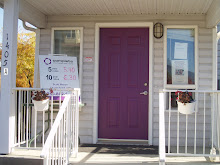By Garry Marr, Financial Post October 17, 2010
Rock-bottom long-term mortgage rates appear to have handed the housing sector the lifeline it desperately needs, helping to push up sales for a second consecutive month and keep prices from falling.The Canadian Real Estate Association said Friday sales last month rose 3% from August on a seasonally adjusted annualized basis — highest since May 2010 — and the second straight month sales rose.
Meanwhile, prices have also begun to stabilize as fears of a dramatic meltdown appear to be abating. The average price of a home sold in Canada last month was $331,089, down slightly from the $331,683 average a year ago. But prices were up from a month earlier, when the average was $324,928.
“Supply and demand are rebalancing and that’s keeping prices steady in many markets,” said Georges Pahud, president of CREA.
The other factor keeping the market afloat are interest rates.
The Bank of Canada has signalled it will take a pause on raising its key lending rate which should keep the prime rate at most banks at 3%, affecting any variable rate borrowers.
But it’s consumers on the long end of the borrowing spectrum who appear to be getting a better deal with the five-year term fixed-rate mortgage reaching an all-time low over the past month.
Gary Siegle, the Calgary-based regional manager for mortgage broker Invis Inc., said the standard rate for locking in for five years is now 3.69% but adds some lenders have dropped to as low as 3.39%.
“I’ve been working for 38 years and I don’t recall rates this low ever in my career,” said Mr. Siegle, adding the discount on variable-rate mortgages has dropped to the point that consumers can float with a rate as low as 2.35%.
“The question I wonder about is at these rates is why are people not all over the real estate market?”
CREA said two-thirds of local markets last month posted sales increases with Winnipeg, Calgary and Montreal standing out. However, compared with last year, sales still lag across the country, down 19.8% in September from a year ago.
“Record level sales activity late last year and earlier this year is expected to further stretch year-over-year comparisons in the months ahead,” the group warned.
TD Bank Financial Group economist Shahrzad Mobasher Fard expects falling mortgage rates to be a significant boost for the market for the near future. “They are a factor that cannot be dismissed,” said Ms. Mobasher Fard. “[Current rates] won’t lead to an overheating but it will support further growth in home sales and prices. The last two months of data indicate there has been a bottoming out of home-selling activity and prices.”
Demand is still tepid but there has been a slowdown in new listings, which are 15% off the peak reached in April. The number of months of inventory, which represents the number of months it would take to sell inventories at the current rate of sales activity, was down to 6.6 months in September.
It was the second straight month inventory levels dropped, having stood at 6.9 months in August and 7.2 months in July.
“Mortgage lending rates eased in the third quarter, which helped support sales activity over the past couple of months,” said Gregory Klump, chief economist with CREA.
“Interest rates are going nowhere fast, so home ownership will remain within reach for many home buyers.”
The chief executive for Royal LePage Real Estate Services Ltd. said he was almost a bit relieved to see the latest figures.
“I was pleasantly surprised to see the year-over-year average price flat given the strength of last year’s September results,” said Phil Soper. “I expected a small decline in average price. It has been driven almost entirely by the low cost of money.”
Financial Post
gmarr@nationalpost.com
http://www.okanaganmortgages.com/


No comments:
Post a Comment